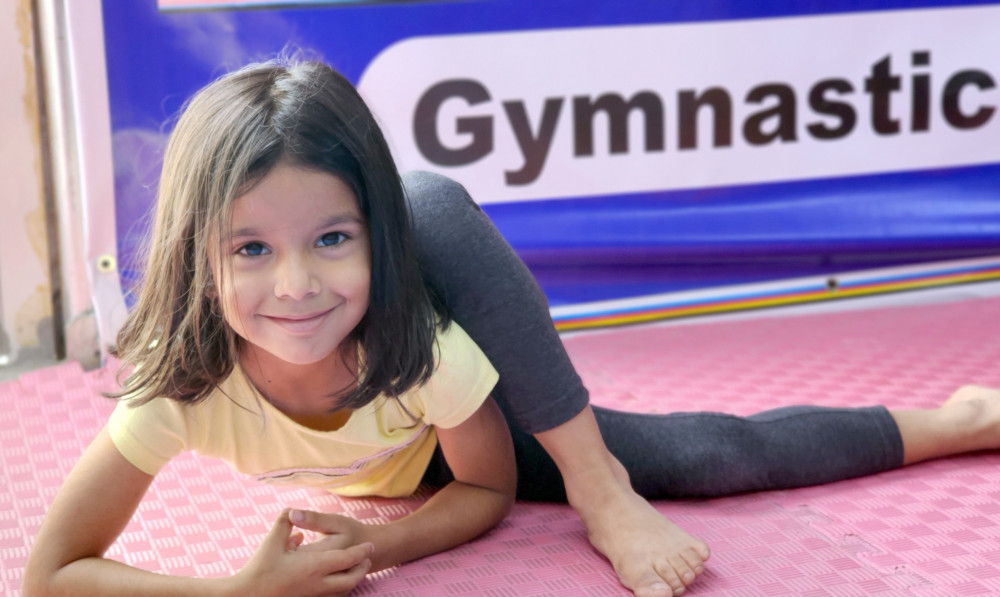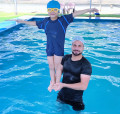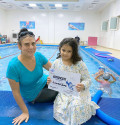
Physical activity like gymnastic is crucial for children's overall health and well-being
2024-03-30 - gymnasticGymnastics is not just a sport; it's an art form that
requires dedication, perseverance, and discipline. It is one of the most
comprehensive forms of physical activity that offers a plethora of benefits,
especially for children. In this article, we will delve into how gymnastics plays
a pivotal role in the holistic development of children, focusing on the
enhancement of strength, flexibility, and endurance.
Introduction to Gymnastics
Gymnastics, derived from the ancient Greek word
"gymnos," meaning naked, originally referred to exercises performed
in the nude to promote physical fitness. Over time, it evolved into a
structured sport encompassing various disciplines, including artistic
gymnastics, rhythmic gymnastics, trampoline gymnastics, and acrobatic
gymnastics.
Importance of Physical Activity for Children
Physical activity is crucial for children's overall health
and well-being. With the prevalence of sedentary lifestyles and technological
advancements, encouraging children to engage in regular exercise has become
more imperative than ever. Exercise not only fosters physical development but
also enhances cognitive function, emotional stability, and social interaction.
Benefits of Regular Exercise
Regular exercise is instrumental in preventing obesity,
strengthening bones and muscles, improving cardiovascular health, and boosting
mood and energy levels. It also promotes better sleep patterns and enhances
cognitive abilities, including concentration, memory, and problem-solving
skills.
Understanding Gymnastics as a Sport
Gymnastics is a highly demanding sport that requires
athletes to demonstrate strength, agility, balance, coordination, and
flexibility through a series of intricate movements and routines. It is not
only physically challenging but also mentally stimulating, as gymnasts must
maintain focus and composure while performing complex maneuvers.
Types of Gymnastics
Artistic Gymnastics: Involves performing routines on
various apparatus, including the floor, balance beam, uneven bars, and vault.
Rhythmic Gymnastics: Focuses on graceful movements
with hand-held apparatus such as ribbons, hoops, and balls.
Trampoline Gymnastics: Features aerial acrobatics
performed on a trampoline, showcasing flips, twists, and somersaults.
Acrobatic Gymnastics: Emphasizes teamwork and
synchronization in performing dynamic partner routines, incorporating lifts,
throws, and balances.
How Gymnastics Helps in Child Development
Gymnastics offers a myriad of benefits for children,
contributing to their physical, mental, and emotional development from a young
age.
Strength Development
One of the most apparent benefits of gymnastics is its
ability to enhance strength. Through repetitive bodyweight exercises and
resistance training, children gradually build muscular strength in their arms,
legs, core, and back. This strength not only improves performance in gymnastics
but also enhances overall physical fitness and reduces the risk of injuries in
other sports and activities.
Flexibility Enhancement
Flexibility is a cornerstone of gymnastics, as athletes are
required to perform a wide range of movements that demand exceptional
flexibility in joints and muscles. Regular stretching exercises and dynamic
movements in gymnastics classes help children improve their flexibility,
allowing them to execute maneuvers with greater ease and grace. Moreover,
increased flexibility reduces the risk of muscle strains and enhances range of
motion, benefiting overall mobility and posture.
Endurance Building
Gymnastics training involves high-intensity workouts and
endurance drills that push athletes to their physical limits. By performing
repetitive routines and conditioning exercises, children gradually improve
their cardiovascular endurance and stamina. This endurance not only enables
them to sustain prolonged physical exertion during gymnastics competitions but
also translates to better performance in other sports and everyday activities.
Psychological Benefits of Gymnastics
In addition to physical fitness, gymnastics also offers
numerous psychological benefits for children, promoting mental resilience,
self-confidence, and emotional well-being. The challenging nature of gymnastics
fosters a growth mindset, encouraging children to embrace setbacks as
opportunities for learning and improvement. Moreover, mastering new skills and
overcoming obstacles in gymnastics instills a sense of accomplishment and
self-efficacy, boosting confidence and self-esteem.
Social Skills and Confidence Building through Gymnastics
Gymnastics provides a supportive and collaborative
environment where children learn essential social skills such as teamwork,
communication, and sportsmanship. Working together with coaches and teammates
to achieve common goals fosters camaraderie and mutual respect. Furthermore,
performing in front of an audience during competitions helps children develop
poise, confidence, and public speaking skills, preparing them for success in
various aspects of life.







.jpg)











































































































































































































